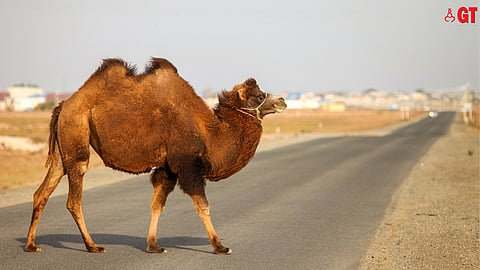

Last year, the United Nations declared 2023 as the International Year of Millets (IYM2023). During that time, the focus was on millets, and a variety of programs were held across Goa, which drew attention to the humble grain.
We celebrated the International Year of Millets (IYM 2023), and students had to cook and eat the millets, like it or not.
In a few days, the Christmas season ends in Goa with the feast of the Epiphany, when the three kings travelled by camel to see the Christ child.
Incidentally, the coming year is IYC 2024, the International Year of Camelids, which includes camels with one hump or two.
It is only when one travels that one discovers that what we learn about geography in school is like the one-eyed teaching the blind! I discovered this when I went to Ladakh and saw Bactrians, or two-humped camels, in the Himalaya mountains.
A visit to Oman changed my entire knowledge of a desert, though there are dromedaries, or one-humped camels which we see in the scenes of the Reis Magos or ‘Three Kings’ who visited the baby Jesus.
The mountains and wadi, or gorges with water even in the driest part of the year, are not things that school teaches about deserts. Perhaps, the name Sawantwadi has an Arabic connection via the spice trade.
The Middle East conflicts bring these animals back into focus as a food security during exodus.
They are mobile and help in the fight against hunger, the eradication of extreme poverty, the empowerment of women and the sustainable use of desert ecosystems.
ROLE OF CAMELIDS
Camelids play a key role in the culture, economy, food security and livelihoods of communities in Andean highlands and in the arid and semi-arid lands in Africa and Asia, specially the deserts of Sahara and Arabia. They are resilient and can survive extreme climates.
Camelids are not just Bactrian camels and dromedaries. They include animals ranging from alpacas to guanacos, llamas and vicuñas, mostly in the Andean mountains of Latin America.
They provide milk, meat and fibre for clothing and blankets, as well as leather for footwear to the people in these regions. They are the beasts of burden which transport materials and also produce organic manure to help cultivate the land.
Thus, camelids contribute to food, nutrition and economic growth in these regions with hostile geographical and climatic conditions.
We may see yaks in the same region as a Bactrian camel, but bovines are different from camelids.
Ruminants like cattle, deer, goats and sheep have four chambers to their stomachs while camelids, including camels, have stomachs with three chambers.
While camelids and cattle ruminate curds from the multiple chambers of their stomachs, I cannot but help ruminate over my journey as a newspaper columnist over the last 32 years.
It all began on the second day of January 1992, when the ‘Green Thumb’ column first appeared on the pages of the Gomantak Times’ Weekender.
The newspaper was later christened GT Weekender and, after a short period in limbo, has been resurrected in its current digital form.
In the interim, my ‘Green Thumb’ column moved to two other local newspapers. Its aim and purpose have always been to keep the reader informed with actionable information.
A happy New Year 2024 to you all.
The author is a former Chairman of the GCCI Agriculture Committee, CEO of Planter's Choice Pvt Ltd, Additional Director of OFAI and Garden Superintendent of Goa University, and has edited 18 books for Goa & Konkan